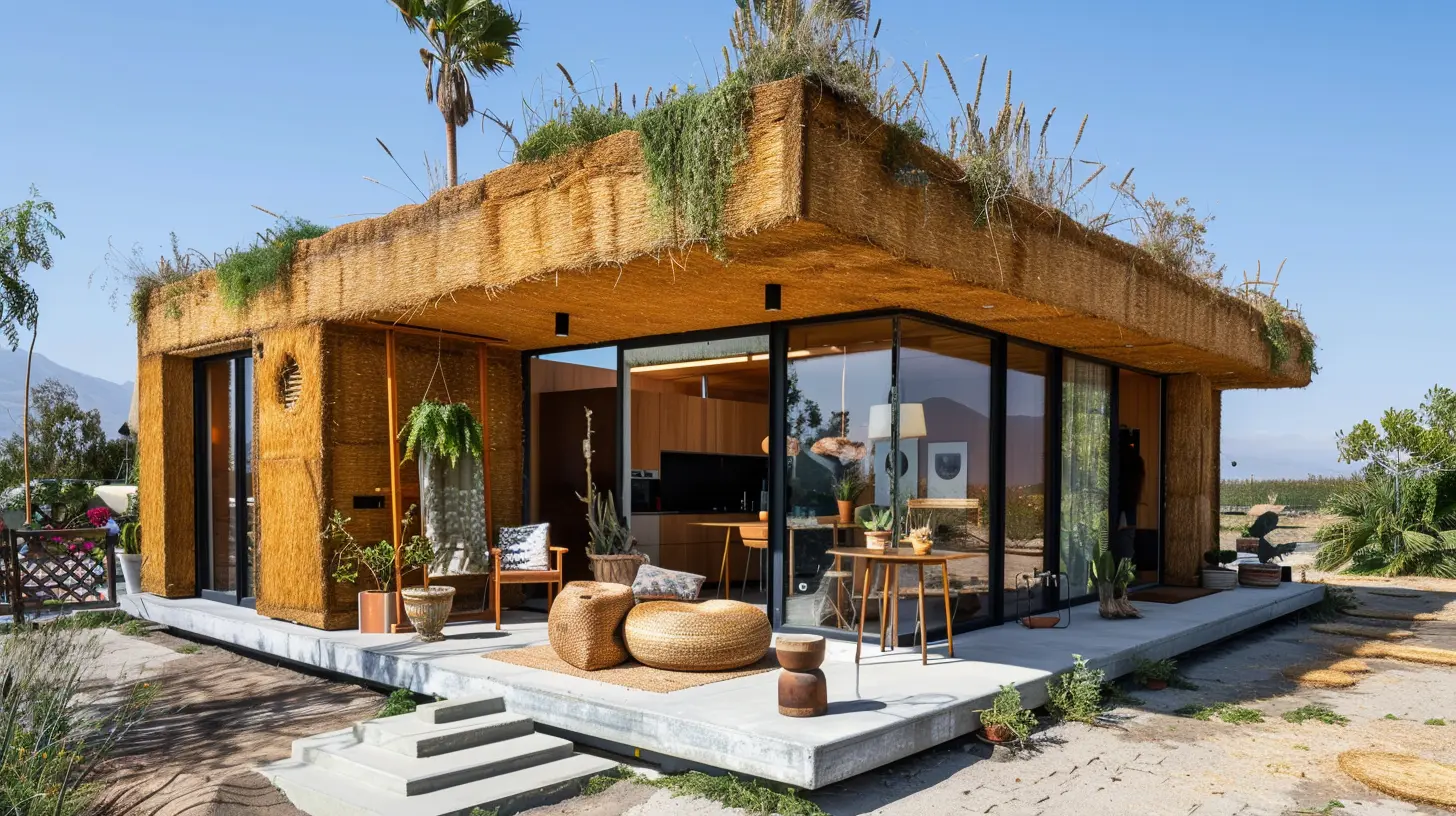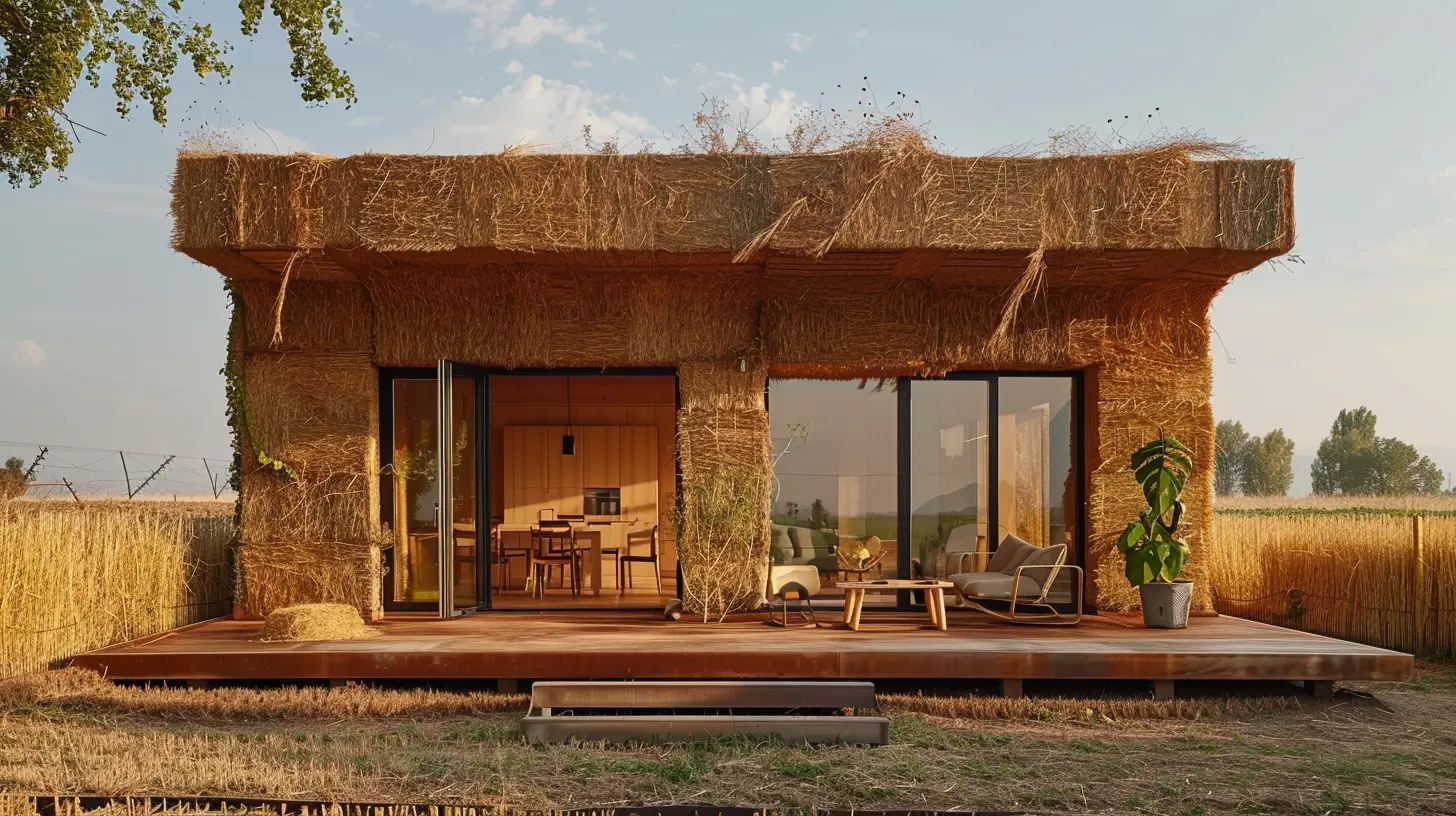Exploring the Use of Straw Bales in Eco-Conscious Architecture
22 November 2025
When someone mentions “straw,” most of us picture a haystack out in the country or maybe even a scarecrow guarding a cornfield. But here’s the surprising twist: straw bales are making quite the name for themselves in the world of sustainable architecture. Yep, what was once a humble agricultural by-product is now helping people build cozy, energy-efficient, and planet-friendly homes.
So, why are more homeowners and builders turning to straw bales? And how do they stack (pun totally intended) up against conventional building materials? Let’s dive into this fascinating corner of eco-conscious architecture and find out what makes straw bale construction more than just a passing trend.
What Exactly Is Straw Bale Construction?
Let’s clear something up right away—straw and hay aren’t the same thing. Hay is food for animals. Straw, on the other hand, is the hollow stalks left over after grains like wheat, barley, or oats have been harvested.Straw bale construction uses tightly packed bales of straw as either insulation or structural elements in homes and buildings. These bales are stacked like bricks, often placed between wooden frames, and then coated with plaster, stucco, or clay.
Sounds simple, right? That’s part of the charm. But don’t be fooled—there’s a lot more going on here than meets the eye.
A Brief History of Straw Bale Homes
Believe it or not, straw bale building isn’t a modern invention. The earliest documented homes date back to the late 1800s in Nebraska, where early settlers made do with what was readily available. The durable, insulating properties of straw quickly caught on.Fast forward to today, and straw bale construction has evolved into a refined building strategy embraced by green architects and sustainability advocates worldwide. It’s no longer just about doing things cheaply; it’s about doing them mindfully.
Why Straw Bales Are a Win for the Environment
Here’s where things get exciting. Straw bales tick off a whole bunch of eco-friendly boxes:1. Renewable and Abundant
Straw is what’s left after the harvest, and farmers don’t have to plant anything extra to produce it. Globally, millions of tons of straw go unused or are even burned—causing air pollution—because they’re seen as agricultural waste. So, by using straw for construction, we’re putting that “waste” to good use.2. Low Embodied Energy
Think about all the energy that goes into making something like concrete or steel—mining, heating, processing, transportation. Straw bales? They’re practically ready to go right off the field. This translates to significantly lower embodied energy, which is a huge plus in sustainable architecture.3. Carbon Sequestration
Yup, straw bales actually lock carbon away. As the straw breaks down naturally over time (which takes decades when plastered), it holds onto the carbon dioxide it absorbed during its life as a plant. This makes it a rare building material that can help reduce overall carbon emissions.4. Biodegradable and Non-Toxic
No harsh chemicals. No plastics. No synthetic insulators. Straw bales are as natural as it gets. And when the building eventually reaches the end of its life, the materials can decompose without harming the environment. Talk about closing the loop!
But What About Durability?
You’d be surprised how strong straw bale homes can be. When properly constructed and maintained, these homes can last a century or more. The secret lies in:- Keeping the bales dry (water is the enemy here)
- Using quality plasters that form a breathable barrier
- Designing good foundations and roofs that keep moisture out
There are straw bale homes across the U.S. and Europe that have withstood earthquakes, harsh winters, and long-term use—proving that “eco” doesn’t have to mean “fragile.”
Energy Efficiency That’ll Blow Your Socks Off
Here’s a fun fact: straw bales offer insulation values (R-values) of R-30 to R-35, and in some cases even higher. That’s way better than most conventional insulation, meaning your home stays toasty in the winter and cool in the summer—without your HVAC system working overtime.In other words, you’ll save money and energy, all while reducing your carbon footprint. It’s a win-win-win situation.
Are They Really Fire Safe?
This is the question everyone has, and it’s a totally valid concern.Surprisingly, tightly packed straw bales covered in plaster are actually very fire-resistant. Crazy, right? The key is that the straw is so densely packed there’s little to no oxygen inside the bales to fuel a fire. Once plastered, the walls are similar to concrete in terms of fire performance.
Many straw bale buildings meet or exceed fire safety codes—often even outperforming conventional wood-frame homes.
Soundproofing: Another Unexpected Perk
Looking for peace and quiet? Straw bales have got your back—literally.Because these bales are dense and thick, they’re incredible at blocking outside noise. It’s like nature’s version of soundproofing. Whether you live near a busy street or just value your solitude, this is one more reason to love straw bale homes.
Cost: Is It Cheaper to Build With Straw Bales?
Ah, the million-dollar question (or rather, the few-hundred-thousand-dollar question). Building with straw bales can be more affordable, especially if you:- Source local straw
- Use volunteer labor (common in straw-bale workshops)
- Do part of the construction yourself
However, costs can creep up if you hire experienced builders or need specialized permits. Still, many people find the long-term savings on energy outweigh the upfront costs. Think of it like buying a fuel-efficient car—you pay a bit more upfront, but you save for years to come.
Challenges and Things to Watch Out For
No building method is perfect, and straw bales do come with some challenges:1. Moisture Management
Straw hates getting wet. A poorly designed or maintained roof can lead to moisture seeping into the walls, which can cause mold or rot. That’s why good design is crucial—large overhangs, raised foundations, and breathable finishes are key.2. Building Codes
Not every city or county is familiar with straw bale construction, which can lead to headaches when it comes time to get building permits. That said, more regions are becoming open to alternative construction methods, especially as sustainability becomes a priority.3. Skilled Labor
While simple in concept, building with straw bales isn’t necessarily a DIY free-for-all. Plastering takes skill, and poor technique can lead to cracks or compromised insulation. The good news? Workshops and training programs are out there if you’re up for learning.Hybrid Construction: Marrying Old and New
You don’t have to go all-in on straw. Many modern eco-builds use straw bales in combination with other materials, like:- Timber frames
- Recycled steel
- Earth plasters or lime stucco
This hybrid approach allows you to blend the rustic with the modern, all while staying environmentally responsible.
Famous Straw Bale Projects to Inspire You
Think straw bale homes are just quirky one-offs? Think again. Some seriously impressive public buildings and homes use straw bales in their design, including:- The School of Environmental Studies in Minnesota
- ACROS EcoCenter in France
- The Passive House in California (which meets ultra-low energy building standards)
These examples show that straw bale design can be both cutting-edge and community-focused.
Is Straw Bale Right for You?
Let’s break it down. Straw bale construction might be your jam if you:- Care about sustainability and want to reduce your carbon footprint
- Value energy efficiency and long-term cost savings
- Appreciate natural aesthetics and minimalist design
- Want a hands-on, community-involved building experience
It might not be ideal if:
- You live in a super humid or rainy area without proper moisture control
- Your local regulations make alternative construction overly difficult
- You need to build fast and on a tight schedule
Still, for many eco-conscious homeowners, the pros far outweigh the cons.
Final Thoughts: A Future Built on Straw?
The idea of building homes from something as simple as straw might sound old-fashioned, but in today’s world, it’s more relevant than ever. In the age of climate change, rising material costs, and increasing demand for sustainable solutions, straw bale construction offers a kind of elegant simplicity that’s hard to beat.It’s more than just building with bales—it’s about rethinking what’s possible with natural, renewable materials. It’s about creating homes that breathe, that age gracefully, and that leave a minimal footprint behind.
So, the next time you picture your dream eco-home, don’t be surprised if a few straw bales find their way into the blueprint. You just might fall in love with them.
all images in this post were generated using AI tools
Category:
Building MaterialsAuthor:

Travis Lozano

